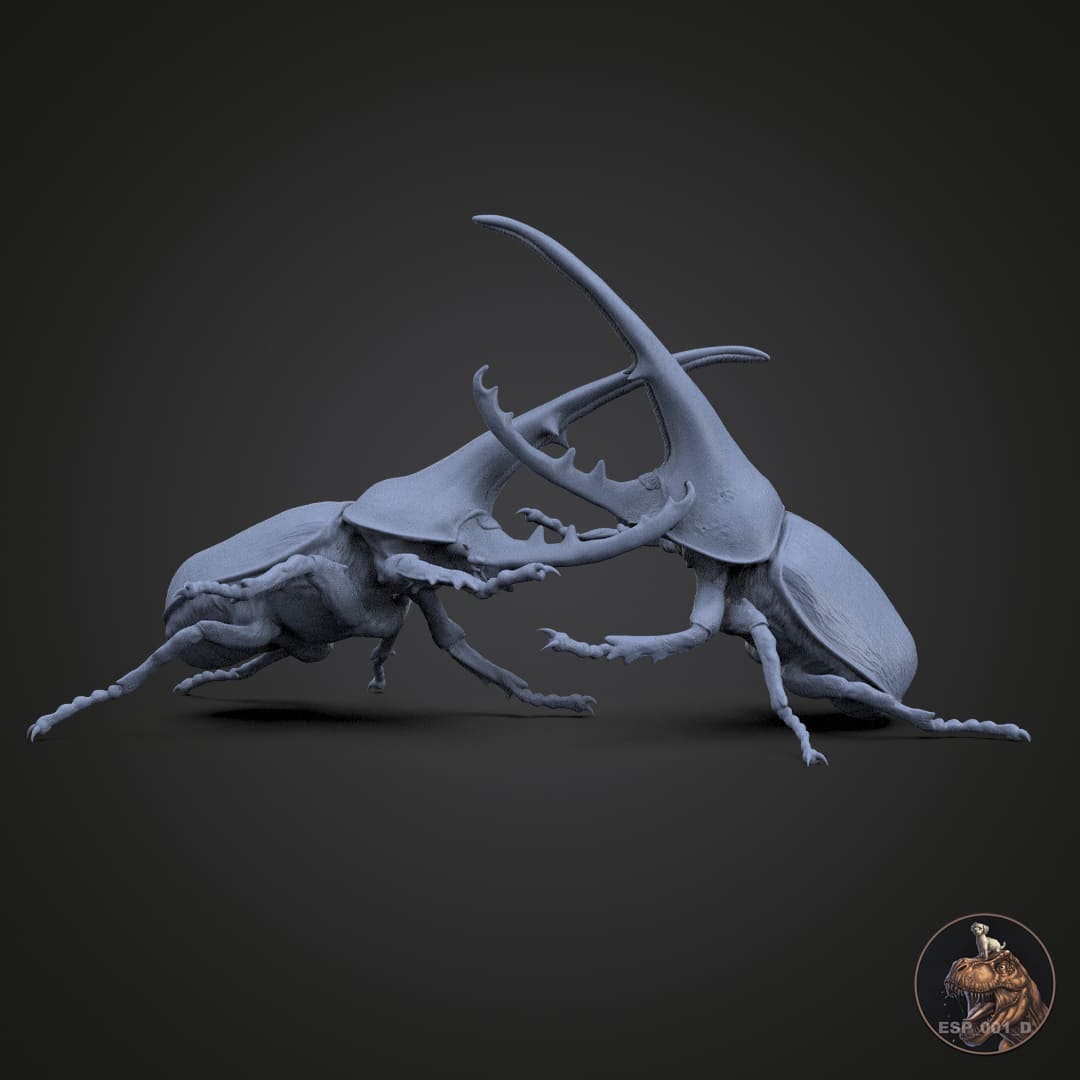
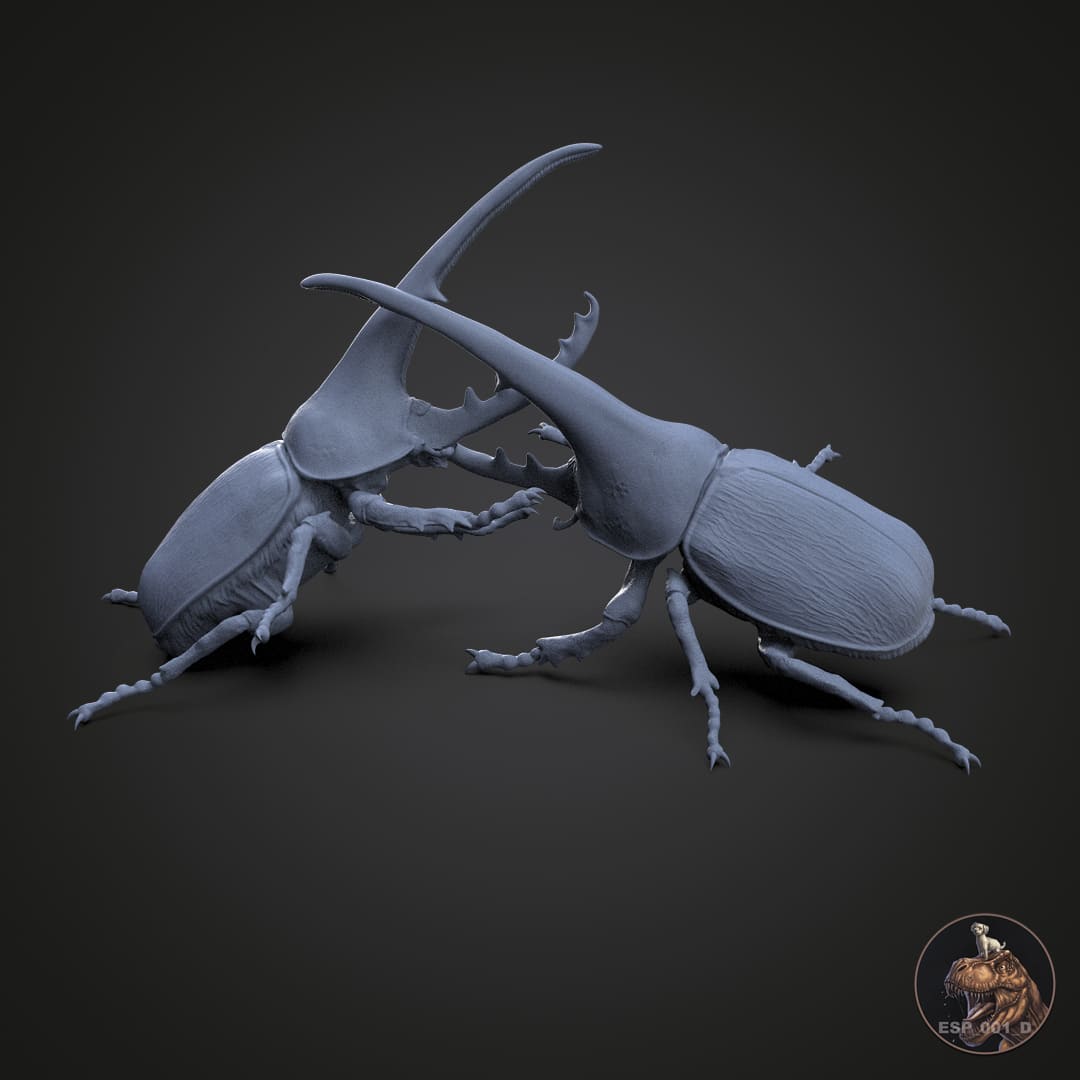
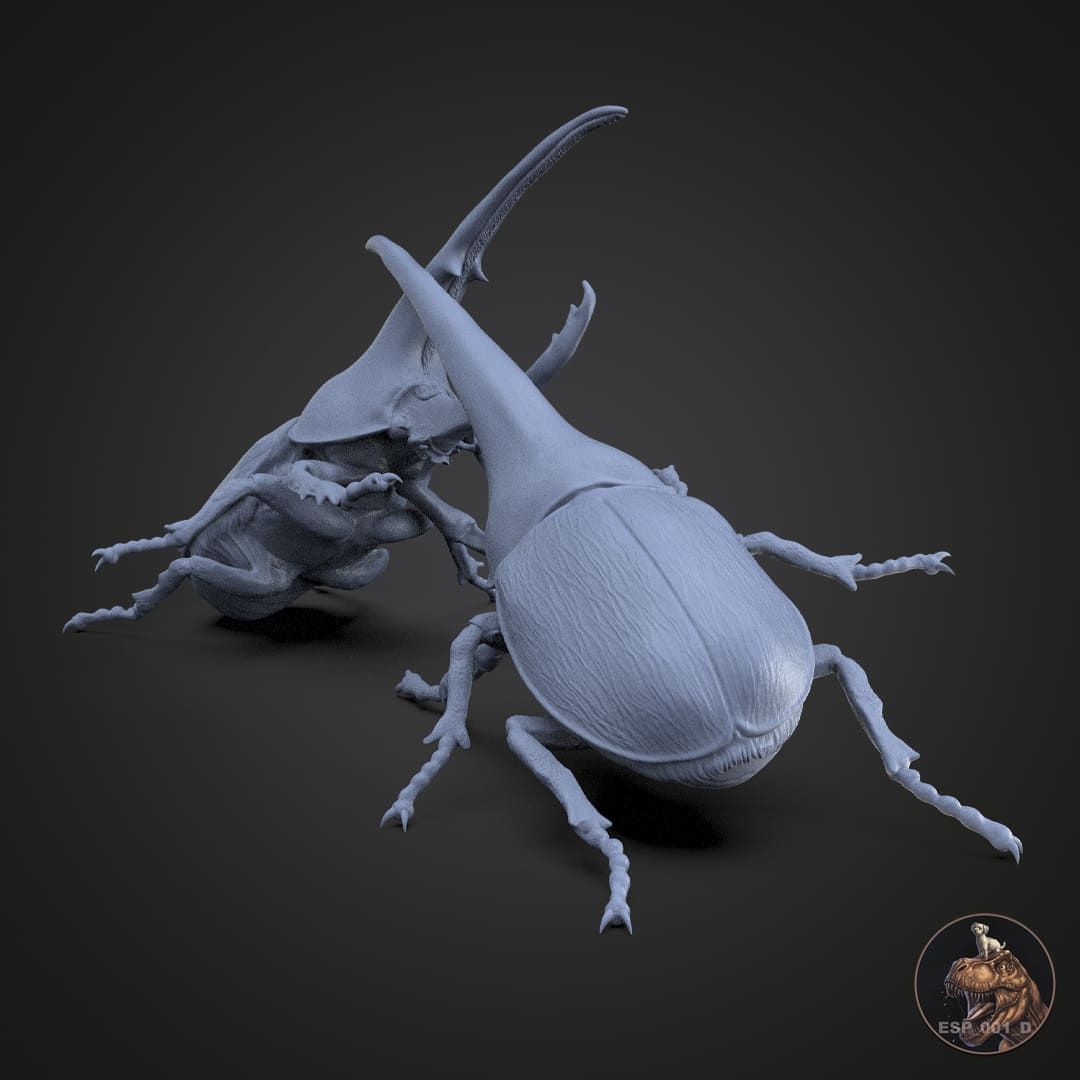
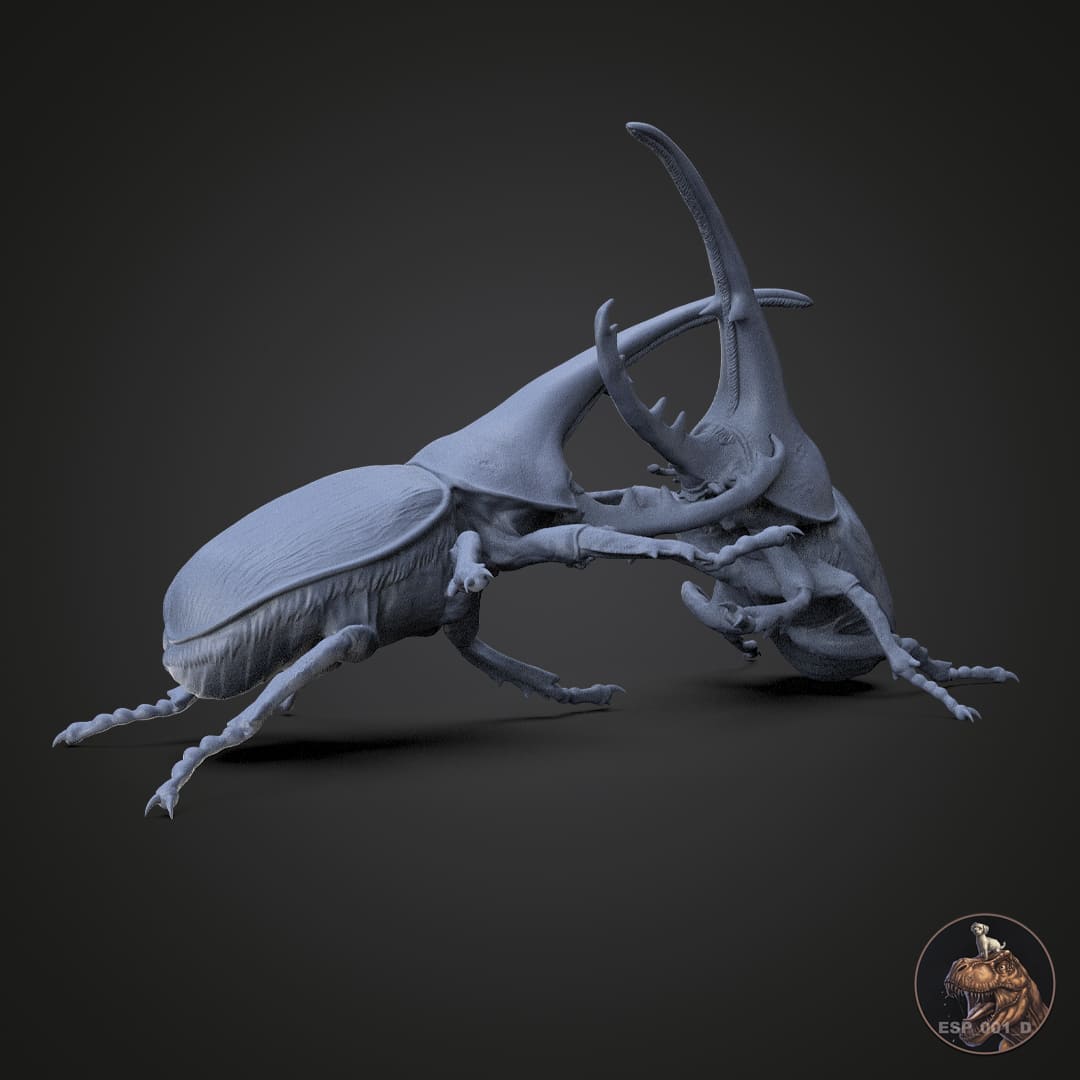
Dynastes hercules
Do you want another scale?
Contact us and we will make it possible!
How will you receive your replica?
In the unprimed and primed variants, you will receive the complete replicas except for the large models, where you will receive an assembly kit.
In the hand-painted variant, the replicas will be delivered complete.
How does the painting service work?
We created a private chat for you where you will have direct communication with our painter , being able to choose your preferred color schemes and follow the hand painting process closely.
Pairs well with

Dynastes hercules
If you have any questions, you are always welcome to contact us. We'll get back to you as soon as possible, within 24 hours on weekdays.
Shipping Information
Visit our shipping policy page to find all the information.
Customer Support
Give us a few details and we’ll offer the best solution. Connect by chat or email.
We are available 24/7.
FAQ’s
Visit our FAQ's page to find answers to common questions.
Contact Us
We'd love to hear from you. We are here to help. Visit our contact page to send us a message.
Product details
The body of the Dynastes hercules is covered by a dark-colored exoskeleton that varies between black and olive green, and its size and strength allow it to stand out among rhinoceros beetles. The males, in particular, are known for their large thoracic horn and a smaller one on their head, which they use mainly in combats between themselves to compete for access to females during the mating season. Despite its intimidating appearance, the Dynastes hercules is completely harmless to humans, as it does not have the ability to bite or sting.
In the context of the Anthropocene, a period marked by the dominant influence of humans on the environment, the Dynastes hercules faces several challenges. The main threat affecting this species is large-scale deforestation, which has significantly reduced its natural habitat. The tropical forests in which it lives are being fragmented and destroyed by agriculture, livestock farming and urbanization, putting the populations of this beetle at risk. As these forests are lost, food sources and breeding sites for the Dynastes hercules decrease, compromising its survival.
Despite these challenges, the Dynastes hercules has shown a remarkable ability to adapt in some areas. In certain cases, it has been observed that these species can survive in forest fragments or in more disturbed areas if there is still enough decomposing organic matter, such as fallen logs and leaf litter, to provide them with food and shelter. Dynastes hercules larvae, which spend several years in an immature state, feed primarily on decaying wood and other plant materials, so their presence in degraded ecosystems may be vital for nutrient cycling.
However, the capture of hercules beetles for commercial purposes is also a growing concern in the Anthropocene. Due to their large size and spectacular appearance, Dynastes hercules specimens, especially males, are highly valued by insect collectors. This demand has driven an international trade in these beetles, which has increased pressure on wild populations. Although often the capture of these insects does not have a massive impact on total populations, the trade, combined with habitat loss, creates a vulnerable situation for the species.
The ecological role of Dynastes hercules in its environment is fundamental. As a decomposer, it contributes to the recycling of organic matter, breaking down wood and other decaying plants, which helps maintain soil health and facilitates the availability of nutrients for plants. Adults are also involved in pollination, albeit to a lesser extent, and are an important part of the food chain in tropical forests, serving as prey for birds, mammals and other insects.
In terms of conservation, it is crucial to protect the natural habitats of Dynastes hercules to ensure its long-term survival. Forest restoration programs and the implementation of protected areas in the tropics of Central and South America are essential to ensure that these insects can continue to play their ecological role in forests. Furthermore, regulating the trade in Dynastes hercules and creating sustainable breeding sites could reduce pressure on wild populations.
Approximate measurements of the beetle:
- Scale 1:1 Complete
- Length 192 mm
- Height 72 mm
- Width 119 mm
- Length excluding legs 170 mm
Information about aftershocks
Collector's item ; Hyper-realistic replica, highly detailed and with a high degree of scientific precision.
Made to scale, prototyped in resin and with a scenic base in most of the models offered. If you like miniatures, both for collecting and for painting, we offer you a wide variety of scale replicas; All of them related to dinosaurs, extinct prehistoric fauna and current fauna.
So if you love dinosaurs and animals as much as we do, this is your favorite store to collect and paint them :)
We are authorized distributors of all the replicas and figures we offer. We use 3D printers with 8K - 14K resolution, and high-quality resins with additives to improve hardness and flexibility, thus offering replicas of impeccable quality.
Different scales will be used to make the replicas (depending on the size of the species), although we are open to making other suggested scales upon request as long as they fit in our printing trays, for which you will have to contact us via email and request the required size.
Replicas are supplied with the option of airbrush priming in dark grey. If you require another colour, please let us know which one you prefer in the box with special instructions for the seller. Without priming, we do not guarantee that the resin will accept paint.
We also offer the option of choosing a professionally painted replica, which is agreed upon throughout its development with the painter, through a private chat available.
Complete replica (one piece): We supply complete replicas in those models that are small, and models that are medium, large or not very bulky, will have the prerogative of being presented as a complete replica or assembly kit as the case may be.
Complete replicas will be supplied separately from their base.
Replica assembly kit: We supply replicas whose models are large, very large or bulky, only with this option.
The indicated replicas (generally composed of base, head, body and tail) will come prepared for the subsequent assembly that will be required by the client, by sanding, putty, adhesive or technique chosen by the client.
All replicas are thoroughly inspected before shipping and will be carefully packaged to prevent damage during transport.
Information about the models
The poses of the models aim to represent each character in the most scientifically viable way, thus revealing the life and customs of prehistoric and modern fauna.
Each character has its own personality and develops in different life scenarios; birth, adolescence and play, hunting, feeding, fighting, courtship, death and many other scenes from their daily life, always from the creative perspective of their designers.
Handmade
All orders are individually prepared on the cutter for subsequent prototyping, obtaining a resin part that will require post-processing by manual and ultrasonic cleaning, support removal, ultraviolet curing, labeling and packaging.
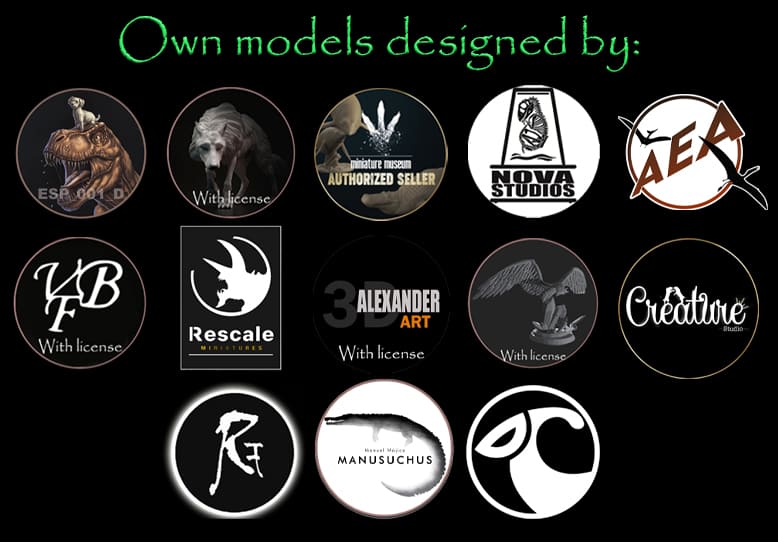
We are authorized distributors
We offer both our own physical replicas and those that have been modeled by many of the best 3D designers, in order to offer you the greatest possible variety.
Frequently Asked Questions
If you have any questions about products, orders or shipping, please read our FAQ page to learn more.

